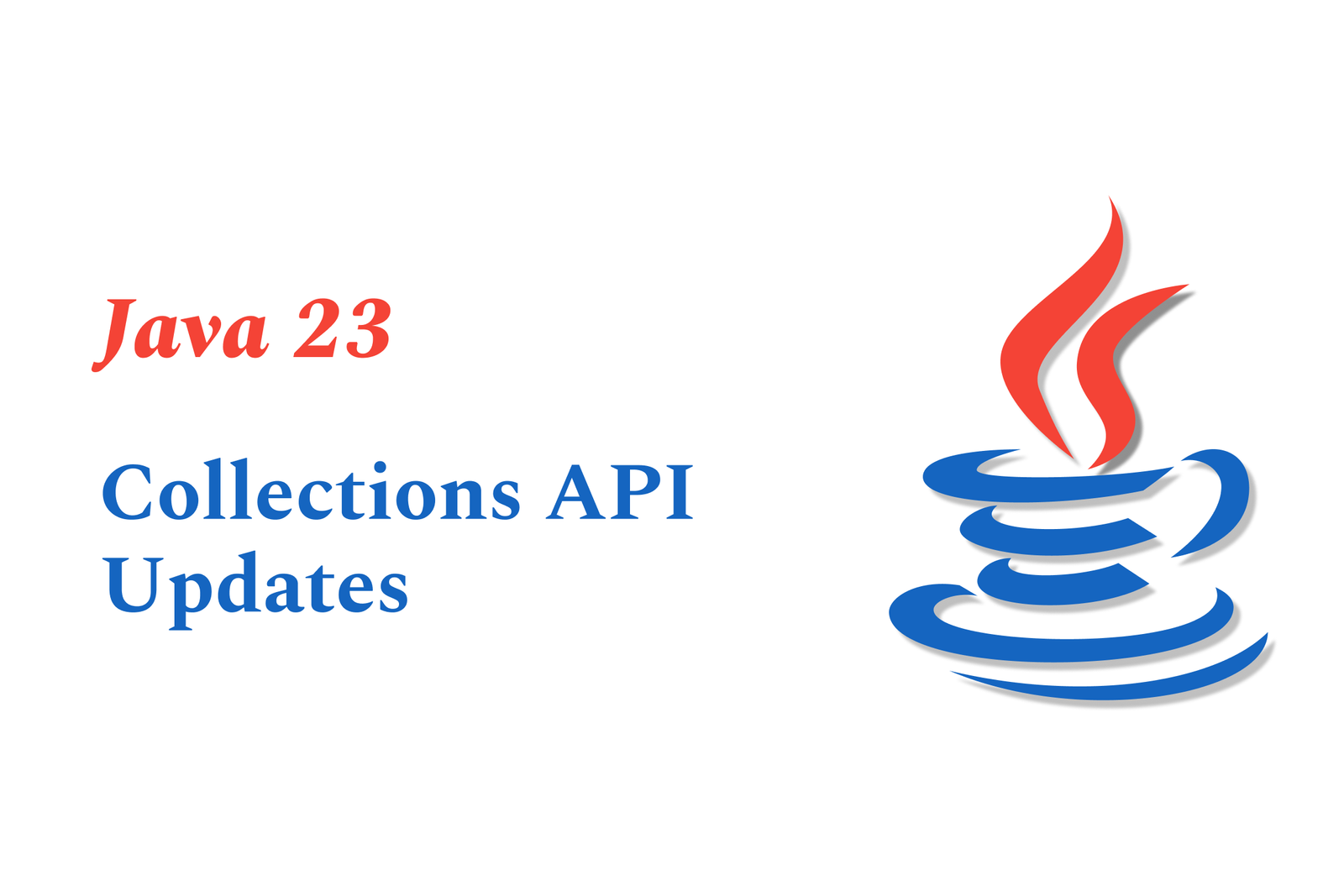Java 23 Collections API Updates
Java 23 introduces enhancements to the Collections API, improving performance, adding new APIs for easier data manipulation, and enhancing interoperability between collections. These updates streamline programming with collections and support modern Java features like records and pattern matching.
Java 23 Collections API Updates
1 ) Overview of Java Collections Framework
The Java Collections Framework (JCF) is a unified architecture for representing and manipulating groups of objects called collections.
It simplifies programming by providing pre built data structures and algorithms, enhancing performance.
The framework promotes interoperability between different APIs, reduces learning curve, and encourages software reuse.
It includes various collection interfaces, implementations, algorithms, and infrastructure support.
2 ) Core Interfaces and Hierarchy
The root interface is `java.util.Collection<E>`, which extends `Iterable<E>`.
Key subinterfaces include:
`Set`, `SortedSet`, `NavigableSet`
`List`
`Queue`, including concurrent versions like `BlockingQueue` and `TransferQueue`
`Deque` and `BlockingDeque`
Map related interfaces (not true collections) include `SortedMap`, `NavigableMap`, `ConcurrentMap`, and `ConcurrentNavigableMap`, which can also be interacted with as collections through view operations.
3 ) Implementation and Design Principles
Java does not directly implement Collection but provides implementations for specialized subinterfaces such as Set and List.
Implementations usually offer two constructors — a no argument constructor for empty collections and one that accepts another collection to create a copy.
Some methods are optional and may throw `UnsupportedOperationException` if not supported.
Implementations may impose restrictions on contained element types, disallowing nulls or certain classes, throwing exceptions when violated.
4 ) Modifiability and Mutability
Collections may be:
Unmodifiable: Reject any modification attempts.
Immutable: Guarantee no changes are possible after creation.
Modifiable: Support changes by adding, removing, or updating elements.
Lists may also be:
Fixed size (size constant, but elements may change)
Variable size
Random access (support fast indexed access, marked by `RandomAccess` interface)
Sequential access
5 ) Synchronization and Thread Safety
Synchronization policies depend on individual implementations.
Without explicit synchronization, concurrent mutations can lead to undefined behavior.
Specialized concurrent collections exist to support safe multi threaded use.
6 ) API Utility and Methods
The `Collection` interface defines numerous utility methods including `size()`, `isEmpty()`, `contains()`, `iterator()`, `add()`, `remove()`, `stream()`, and more.
Stream support is integrated to allow fluent functional style operations with collections.
Optional operations enable flexibility in implementation.
7 ) General Benefits of the Framework
Reduces programming effort by offering reusable data structures and algorithms.
Improves performance through efficient implementations.
Enhances interoperability between independent APIs via a common collection language.
Simplifies API learning and design.
Encourages software reuse through standard interfaces and concepts.
This summary reflects the prominent aspects of the Java Collections API as updated in Java SE 23 and JDK 23, emphasizing the architecture, interface hierarchy, usage conventions, modifiability, synchronization considerations, and overall benefits of the framework.
https://justacademy.in/news-detail/java-and-apache-kafka:-new-integration-features
https://justacademy.in/news-detail/ios-19-localization-tips-for-global-markets
https://justacademy.in/news-detail/android-enterprise-management-features
https://justacademy.in/news-detail/java-performance-profiling-best-practices
https://justacademy.in/news-detail/java-in-e-commerce-platforms:-innovations
Related Posts
In 2025, top Angular libraries offer modern, feature-rich components and tools for building dynamic web apps. From powerful data grids to low-code platforms like UI Bakery, these libraries enhance development speed, UI design, and scalability, making them essential for Angular developers.
Migrating from AngularJS to Angular 17 involves gradually upgrading your app by running both frameworks together using tools like ngUpgrade, rewriting components in TypeScript, and adopting Angular’s modern architecture to enhance performance, maintainability, and long-term support.
Angular state management tools help organize and handle app data efficiently, improving scalability and maintainability. Popular options include NgRx for robust, RxJS-based patterns, and newer Signal Store solutions that offer simpler, reactive approaches integrated tightly with Angular’s latest features.
RxJS in Angular empowers developers to manage asynchronous data streams with powerful operators like `forkJoin`, `combineLatest`, and `zip`. Mastering these key operators in 2025 is essential for building efficient, reactive applications that handle complex event sequences seamlessly.
Angular performance optimization in 2025 focuses on improving app speed and responsiveness by using techniques like OnPush change detection, lazy loading, efficient data caching, and AOT compilation. These practices reduce load times, enhance user experience, and ensure scalable, fast Angular applications.
In 2025, Angular remains preferred for large-scale, enterprise apps with its robust, all-in-one framework, while Vue attracts developers seeking simplicity and fast development for smaller projects. Both frameworks excel, with choice driven by project needs and team expertise.
Angular Signals are a new reactive primitive in Angular 16 that enable fine-grained, efficient change detection by automatically tracking dependencies and updating only affected parts of the UI. They simplify state management and boost app performance, revolutionizing Angular's reactivity model.
Angular interview questions to prepare in 2025 focus on core concepts like components, directives, data binding, routing, and dependency injection, along with TypeScript mastery and latest Angular features to ensure strong practical knowledge for building scalable, efficient web applications.
AngularJS reached its official end of support in January 2022, meaning no further updates or security patches. To ensure app security and performance, developers should consider migrating to modern Angular versions or seek third-party long-term support options if immediate migration isn’t possible.
The Angular Roadmap 2025 highlights upcoming features focused on improving developer experience and performance, including zoneless Angular, Signals integration, enhanced Forms, async data handling, improved HMR, and expanded Angular Material/CDK enhancements, driving modern, efficient web app development.










